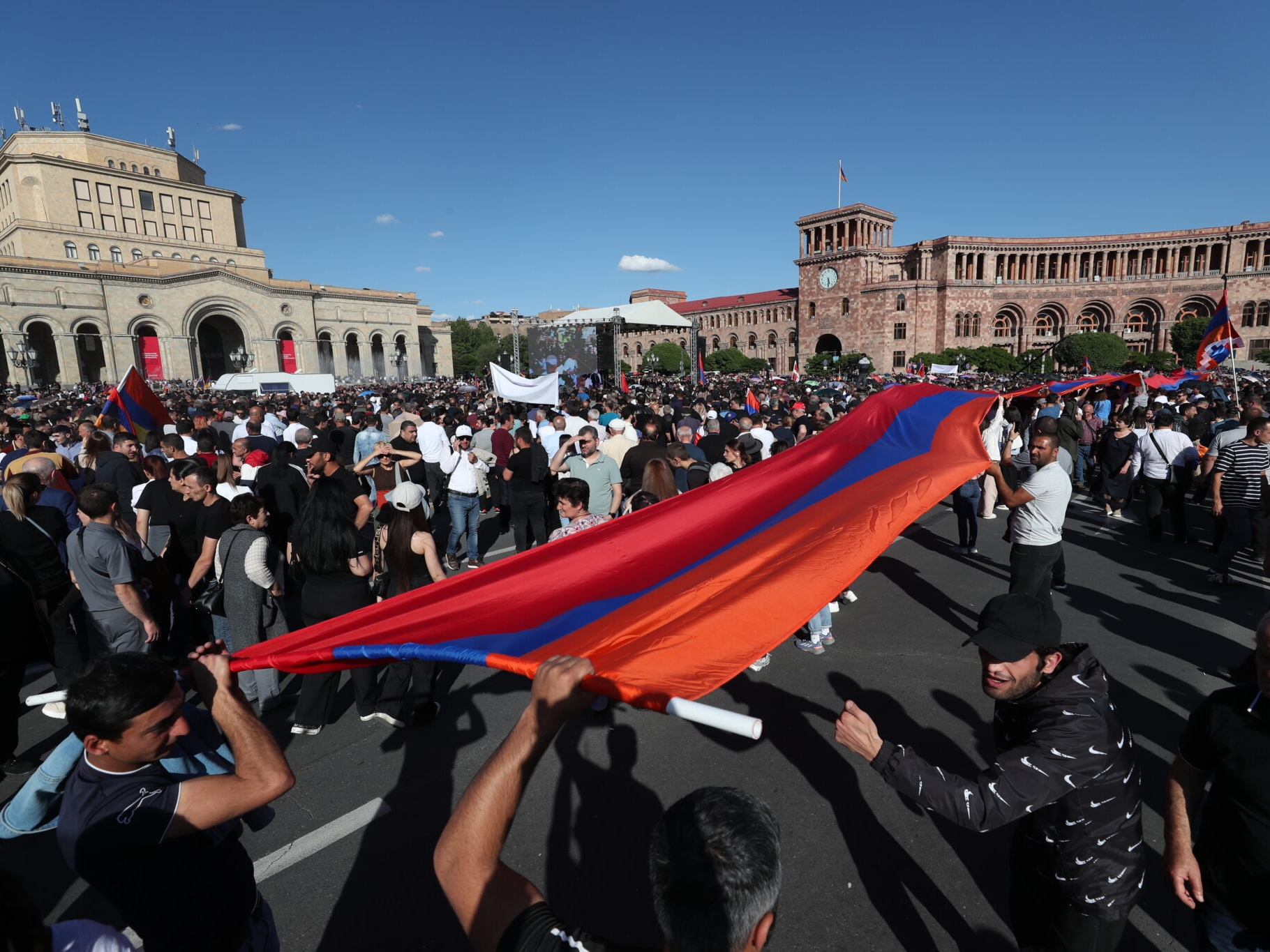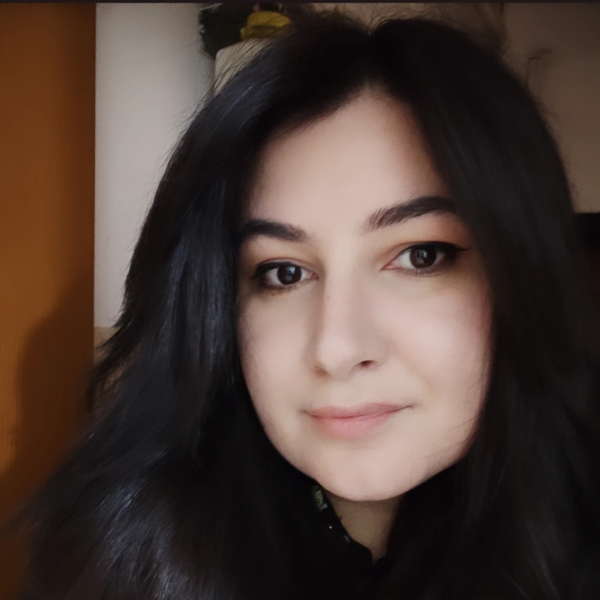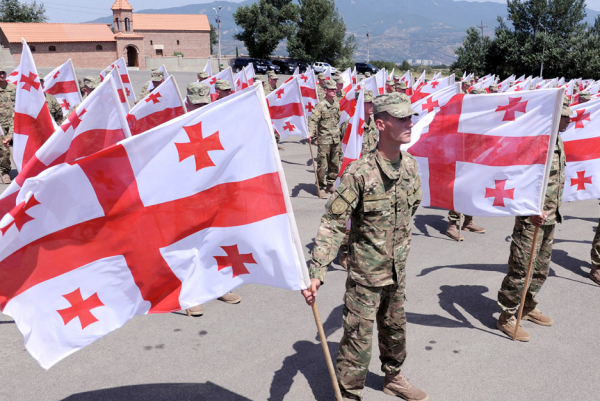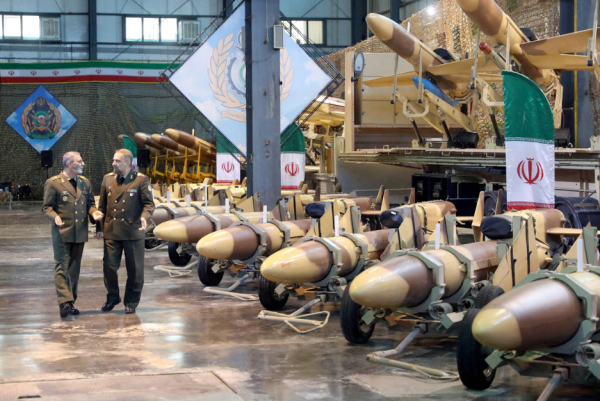Protests in Armenia: The rise of the Church or the revanchist efforts of the Ancien régime?

A protest in Yerevan on May 9. (Photo: armradio.am)
The statement issued after the 8th meeting between the border determination commissions of Azerbaijan and Armenia on Qazakh-Ijevan border, regarding the return of four non-enclave villages of Qazakh triggered protests in Armenia.
The protests, which had previously taken place in Kirants, Voskepar and Noyamberyan villages of the Tavush region, reached the capital Yerevan. The leader of the protests was Archbishop Bagrat Galastanyan, who serves as primate of the Tavush Diocese. Galastanyan, who previously held the position of archbishop in the Armenian diocese of Canada, openly proclaimed himself a revanchist during a Sunday sermon. He asserted that revange is the way to reclaiming one's homeland. Moreover, Galastanyan's influence extends beyond mere rhetoric; the Tavush church, with his support conducts military training for children, promoting Garegin Nzdeh nationalism.
According to Armenian sources, between 20,000-30,000 people attended the protest in Yerevan's Republic Square on May 9.
Archbishop Galastanyan, who appeared on stage in white religious clothing, accused the Armenian government of destroying the country's security system, of political failure and making the church a target. He gave Armenian Prime Minister Nikol Pashinyan one hour to resign. Time expired, but Pashinyan did not resign. Meanwhile, many government members, including Nikol Pashinyan’s press secretary Nazeli Baghdasaryan, shared Nikol Pashinyan's photo on their social media accounts and wrote that he was the leader elected by the people. When Pashinyan did not resign within an hour, the archbishop stated that their next goal was to dismiss the prime minister with a vote of no confidence in the parliament and met with two opposition parties on this issue after the rally. However, out of 107 seats in the parliament, only 35 belong to the opposition blocs, and they need one vote to submit a vote of no confidence.
In the following days, civil disobedience actions were carried out throughout the country upon the call of Galastanyan. Protesters temporarily blocked the Armenia-Iran and Armenia-Georgia roads. Some students at Yerevan State University boycotted classes and blocked roads various parts of Yerevan.
Galastanyan's fiery outbursts on the first day did not help him in the following days. The civil disobedience actions that took place were on a smaller scale and the police had no difficulty in controlling the situation. According to the Armenian media report, more than 150 people were detained.
The protests held on May 10 and 12 were attended by one-third as many people as those who attended the previous protest. Speaking on the stage, Galastanyan said that he met with Ishkhan Zakaryan, an independent MP who once served in different positions during the Kocharyan and Sarkisian period, and that the MP would participate in the vote of no confidence in Pashinyan. But in order for the vote of no confidence to pass the parliament, the votes of 54 deputies are needed, which means that Galastanyan must convince the deputies from Pashinyan's party.
The protests led by Bagrat Galastanyan gave a feeling of 'déjà vu'.
In terms of its organization, this protest resembled the unsuccessful sequel of the 2018 Velvet Revolution, which brought Nikol Pashinyan to power.
Two years ago, similar protests were organized against the goverment and the peace process by ARF-Dashnaktsutyun, Robert Kocharyan and Serzh Sargsyan parties. Bagrat Galastanyan, who said he had no connection with the old regime, appeared on stage during failed 2022 protests and spoke to the public against the peace agreement.
This time, addressing the crowds under the banner of 'Armenian, Armenia, Motherland, and God', Galastanyan lacked a forward-thinking strategy, a concrete solution, or any proposal beyond advocating for war. Supported by the opposition, the archbishop's populist rhetoric and utopian promises fell short in persuading the public to consider a change in government.
There is no clear answer to the question of who will replace Pashinyan if he resigns. Galastanyan said that this person would not be from any party. Vartan Oskanian, who served as Minister of Foreign Affairs during the Robert Kocharyan period, said that Bagrat Galastanyan is the most suitable candidate for the post of Prime Minister of the transition period .It later turned out that Galastanyan, in addition to being an Armenian citizen, is also a Canadian citizen and cannot be elected as prime minister according to Armenian consitution. Galastanyan, who confirmed that he is a Canadian citizen, hinted that he could not say no to the position of prime minister if it will be demanded:
“[But] if the people want [it], and the Armenian Patriarch will bless [it], who am I to say no? But I don't want to.”
Certainly, these are just empty words. For Galastanyan's ambitions to materialize, he requires more than merely 30,000 supporters and 35 deputies, along with a constitutional amendment.
Some analysts still consider the protest held on May 9 as the largest protest against Armenian Prime Minister Nikol Pashinyan during his 6-year rule. This is not a coincidence either. According to the survey results announced by Gallup International, while 16% of those surveyed in March last year were satisfied with Pashinyan's activities, this number was 8% in March this year. Although the ratings of Pashinyan, who continued to make wrong decisions after 2020, continued to decrease, the fact that he does not have a strong opponent and lack of public trust and affection towards the figures constituting the Armenian opposition are among the factors that strengthen Pashinyan's dominance.
Hence, amid these protests, the opposition leaders opted to maintain a low profile. However, pro-Pashinyan media and Telegram channels posted videos of Galastanyan meeting with Dashnaktsutyun leader Ishkhan Saghatalyan, Robert Kocharyan's son MP Levon Kocharyan, former defense minister Seyran Ohanyan and other opposition figures.
Furthermore, the active participation of Garnik Danielyan, a deputy of the Hayastan faction led by Robert Kocharyan, and Gegham Manukyan from the ARF, provides additional evidence that these protests were indeed organized by the opposition.
The Tavush for Motherland movement initiated by Galastanyan is supported by the most radical figures of Armenia. Among those who participated in the protests was former member of JCAG terrorist organization Hampig Sassonian, who murdered Türkiye's Consul General in Los Angeles, Kemal Arıkan in 1982. Bagrat Sisliyan, an ASALA name who carried out the attack on the Turkish Consulate General in Paris in 1981, was among participants too.
The National Democratic Alliance (NDA), another radical group backing the protests, has surprised many by aligning with a movement supported by the pro-Russian old regime. This is unexpected as the NDA typically identifies as pro-Western and frequently stages anti-Russian protests in Armenia. Moreover, there exists a certain hostility between the NDA and the old regime.Formun Üstü
A participant of the first Karabakh war Lebanese-born Jirair Sefilian, leader of ultra nationalist Sasna Tser was among the people gathered in the square. Sefilian, was arrested in 2016 on the grounds that he was planning to overthrow the government through an armed rebellion. His supporters of an armed group sieged the regional police station in Yerevan . The armed group demanded the resignation of President Serzh Sargsyan and tried to negotiate the release of Sefilian from prison. The hostage crisis resulted in the death of three police officers. Sefilian, on the other hand, was released after Nikol Pashinyan came to power in 2018 and was granted Armenian citizenship. However, following the developments after the Second Karabakh War, both the NDA and Jirair Sefilian, who once supported Pashinyan, are now among opposition names.
Another person who showed his support to Galastanyan was Hovhannes Hovhannisyan, the former priest of Kelbajar Khudaveng monastery. When Kalbajar was occupied in 1993, Hovhannisyan, was the first person to enter the Khudaveng monastery together with Monte Melkonyan, a member of the ASALA terrorist organization. Being also the participant of the first Karabakh war Hovhannesyan during his interview said that the hands and tongues of those who signed and said that Karabakh was Azerbaijani territory should be cut off.
Although the leader of the Armenian apolistic church, Karekin II, did not openly express his support for the protests, Bagrat Galastanyan said that he frequently met with Karekin and that he also supported the movement.
Ever since the issue of returning the four villages of Qazakh came into discussion, Armenia has witnessed a surge of opposition against it. Notably, objections were not limited to the opposition alone; few political commentators offered objective assessments. Some analysts labeled Azerbaijan's rightful demand as land grabbing, advocating for Armenia to seek support from various countries and international organizations. However, the agreement reached on April 19 was welcomed by many countries.
Media and political analysts claimed that the villages Armenia agreed to return were from the Tavush region, causing widespread concern and confusion among the population.
As a result, nearly 30,000 people participated in the protest on May 9. However, those who took the stage and made speeches did not even mention the situation in the border villages and the concerns of the people. These people, whose attitudes are generally maximalist, clearly state that their goal is to get rid of the goverment, to stop Armenia- Azerbaijan normalization process.
Even if people are not happy with Nikol Pashinyan's politics, they are not very keen on the return of the old regime. What the archbishop promises to the public is chaos, uncertainty, war with Azerbaijan and uncertinity in domestic politics. For now, it seems that this protest is doomed to failure, like the protests organized by Kocharyan, Dashnaktsutyun and Sargsyan supporters in 2022. Nikol Pashinyan seems to have passed another test. But he may not get what he expects in the general elections to be held in 2026. Therefore, he should be more courageous to normalize relations with its neighbors without wasting time and prove that regional cooperation and border determination are in Armenia's interest.







